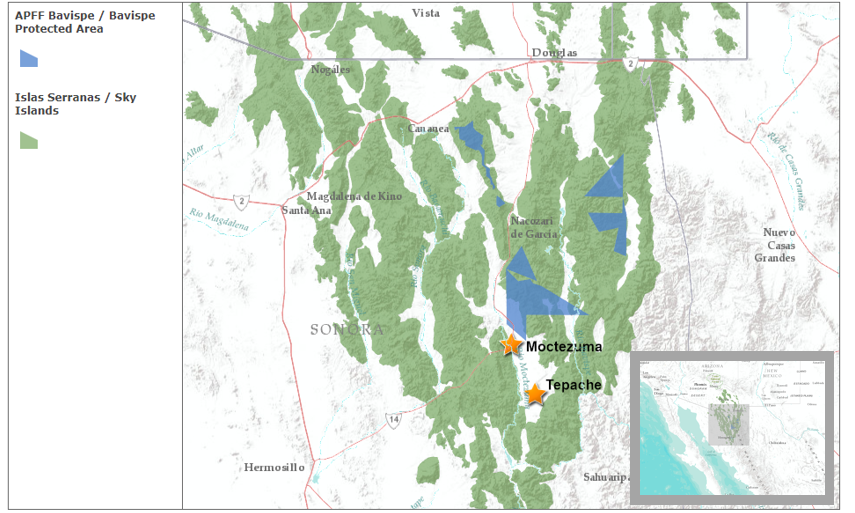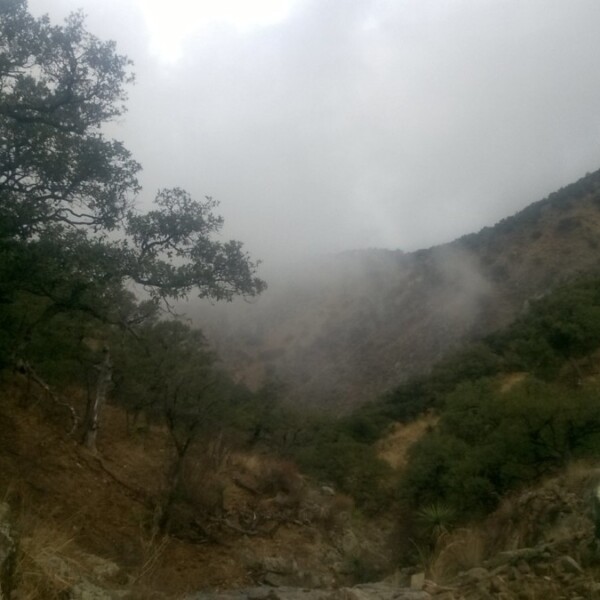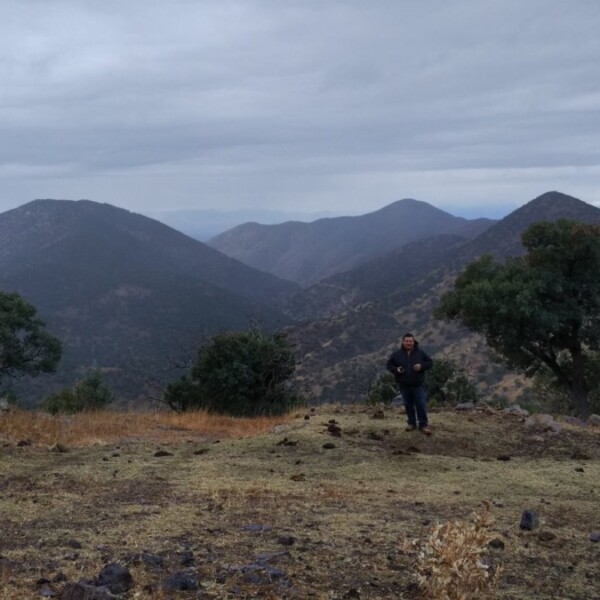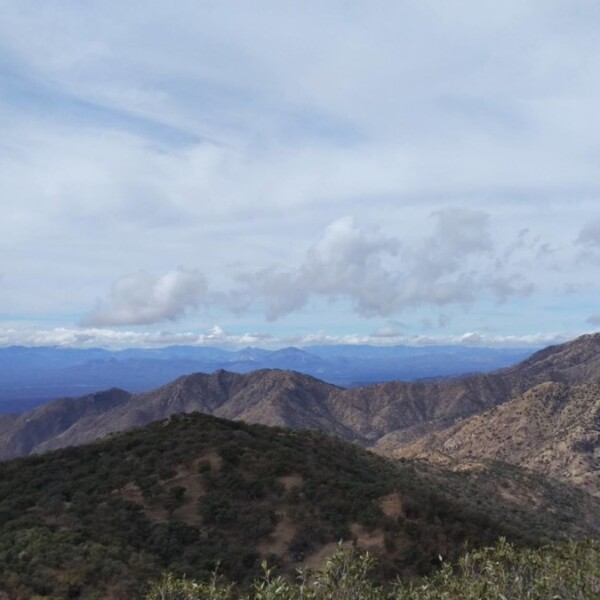Área de Protección de Flora y Fauna (APFF) Bavispe is a 200,900 ha Natural Protected Area in Sonora, Mexico that is scattered across 3 sky islands – Sierra Los Ajos, Sierra Buenos Aires and Sierra La Púrica. It is composed of a combination of federal, private, and communal lands all under federal protection. Being one of Mexico’s oldest protected areas, Bavispe was originally intended to “provide services for local communities and industries: timber for industries such as mining; conserving and propagating vegetation to regulate hydrological and erosion processes; forestry by the local people; and conserving and attending to wildlife’s proliferation” as Villareal et al (2019) explain in their recently published paper.

APFF Bavispe is the Natural Protected Area with the highest concentration of Priority Species in Mexico, according to Juan Carlos Bravo from Wildlands Network. This is in part due to its areas of influence including the San Pedro River Basin and the Sky Islands. In the past, Sky Island Alliance has collaborated with APFF Bavispe park staff and private landowners that reside inside the park to assess springs, restore habitat and monitor wildlife movement.
Some of the wildlife species that call this land home include:
- Jaguars (Panthera onca)
- Bears (Ursus americanus)
- Ocelots (Leopardus pardalis)
- Beavers (Castor canadensis)
- Thick-billed parrots (Rhynchopsitta pachyrhyncha)
- Golden eagles (Aquila chrysaetos)
- River otters (Lontra longicaudis)
- Pronghorns (Antilocapra americana mexicana)
- Bison (Bison bison),
- Aplomado falcons (Falco femoralis septentrionalis)
- Black-tailed prairie dogs (Cynomys ludovicianus)
To learn more about our work with protected natural areas in Mexico read our blog post about our Sister Parks Project.
Sources
Bravo, J.C. (2016, July 29) Ajos-Bavispe: A Reserve Left in the Bureaucratic Cooler. https://wildlandsnetwork.org/blog/the-need-to-update-the-ajos-bavispe-reserve/
Villareal, M. L., Haire, S.L., Bravo, J.C., Norman, L. M. (2019) A Mosaic of Land Tenure and Ownership Creates Challenges and Opportunities for Transboundary Conservation in the US-Mexico Borderlands. Case Studies in the Environment, DOI: 10.1525/cse.2019.002113. https://cse.ucpress.edu/content/early/2019/10/19/cse.2019.002113




